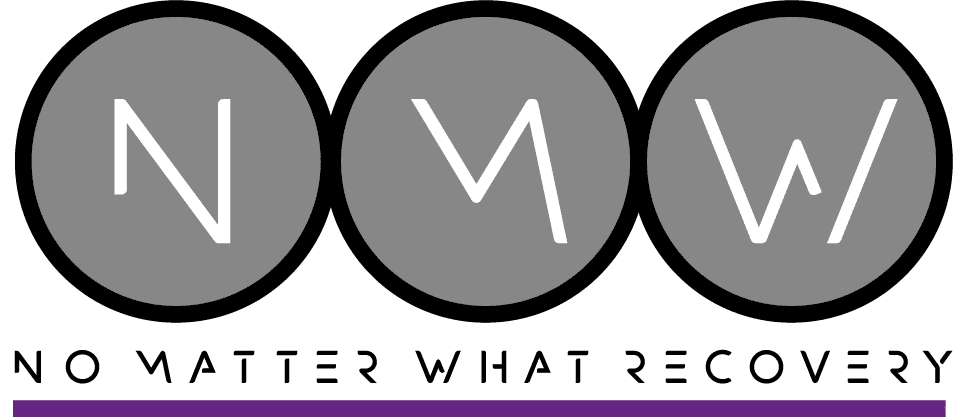Medically Reviewed by: Eric Chaghouri
Methamphetamine, often simply known as meth, is a highly addictive stimulant that wreaks havoc on both the central nervous system and various bodily functions. One of the most visible and distressing consequences of chronic meth use is the development of meth sores. These painful lesions not only mar the skin but also symbolize the profound impact the drug has on an individual’s health. This article aims to explore the causes, effective treatments, and comprehensive rehabilitation approaches necessary to manage and recover from meth sores, highlighting the crucial role rehabilitation facilities play in this healing process.
Understanding Meth Sores
What are Meth Sores?
Meth sores are physical side effects that appear on the skin of individuals who use methamphetamine extensively. These lesions can vary from small, acne-like bumps to large open wounds. Typically found on the face, arms, and legs, meth sores can also appear on other parts of the body, depending on the meth user’s behavior while under the influence of the drug.
Causes of Meth Sores
The development of meth sores can be attributed to several interrelated factors:
- Chemical Irritation: Methamphetamine contains several caustic ingredients that can irritate the skin. Users often have impurities in the drug mix that can cause allergic reactions or chemical burns when they sweat out these substances.
- Compulsive Behavior: Meth significantly enhances feelings of anxiety and paranoia, often leading users to hallucinate. One common hallucination is the sensation of bugs crawling under the skin, which leads users to scratch incessantly to get rid of these imagined insects, a condition known as “meth mites.”
- Neglect of Personal Hygiene: Chronic users of methamphetamine often neglect personal hygiene, which can exacerbate the condition of the skin. Poor hygiene can lead to the clogging of pores and subsequent infections, particularly when the skin is already damaged.
- Immune System Compromise: Meth use impairs the immune system, reducing the body’s ability to repair itself and fight off infections. This immune suppression makes it easier for bacteria to colonize sores and wounds, leading to more severe infections.
- Malnutrition: Many individuals addicted to methamphetamine experience significant reductions in appetite and often suffer from malnutrition. This lack of nutrients weakens the skin’s ability to heal and regenerate, making it more susceptible to sores and less capable of recovering from wounds.
The Science Behind Skin Issues Due to Methamphetamine Use
The pharmacological impact of meth on the body is profound. When meth is ingested, it triggers a massive release of dopamine in the brain, a neurotransmitter linked to pleasure, movement, and attention. This flood of dopamine is what gives the drug its addictive properties and also leads to substantial changes in brain function. These neurological changes disrupt normal decision-making and impulse control, making users more likely to engage in repetitive and obsessive behaviors, such as picking at their skin.
Additionally, meth constricts blood vessels, which reduces blood flow to the skin. This diminished circulation impairs the skin’s ability to heal and can lead to necrosis, where areas of skin die due to lack of blood. Over time, repeated episodes of skin picking and poor healing can lead to the formation of chronic sores or ulcers that are difficult to heal and manage.
Understanding the multifaceted causes and the underlying science of meth sores is crucial in addressing both the physical and psychological aspects of their treatment. It emphasizes the need for comprehensive care strategies that incorporate medical treatment, psychological support, and lifestyle modifications to support recovery and improve overall well-being.
The Impact of Meth Sores on Physical Health
Infections and Complications
Meth sores significantly increase the risk of developing infections due to the open sores and often untreated wounds that expose subcutaneous tissues to bacteria and viruses. Common infections include bacterial infections such as staphylococcus and streptococcus, which can rapidly escalate into more severe conditions if left untreated. Users with meth sores are also at higher risk of contracting cellulitis, a deep skin infection that can become life-threatening if it spreads to the lymph nodes and bloodstream.
Long-term Skin Damage
The repetitive injury to the skin caused by scratching and poor healing can lead to chronic ulcers, extensive scar tissue, and other health problems. This scarring can be disfiguring and often requires specialist treatment to manage. Furthermore, prolonged meth use and the resultant skin damage can lead to hyperpigmentation or hypopigmentation, where patches of skin lose their color or become darker. This can affect the individual’s appearance long-term and is particularly challenging to reverse.
Coping Mechanisms and Strategies
Effective management of social anxiety involves a combination of professional treatments and personal coping strategies. Professional interventions include therapies such as Cognitive Behavioral Therapy (CBT), which helps individuals identify and challenge their negative thoughts, and Exposure Therapy, which gradually introduces individuals to feared situations in a controlled manner. Personal strategies might include mindfulness and relaxation techniques, which help manage the physiological symptoms of anxiety.
Psychological Effects
Psychological Triggers for Picking and Scratching
Meth-induced psychosis often leads to delusional parasitosis, where users feel insects crawling under their skin, prompting them to pick and scratch at perceived infestations. This condition exacerbates skin damage and hampers the healing process. Additionally, the heightened state of alertness and paranoia can lead users to engage in repetitive behaviors, including compulsive picking at the skin, which they may see as a way to relieve anxiety or respond to hallucinations.
Impact on Mental Health and Self-esteem
The physical appearance of meth sores can lead to profound psychological distress. Users may become increasingly isolated due to embarrassment about their appearance or fear of stigma, which can perpetuate a cycle of depression and anxiety. This isolation can hinder social interactions and negatively impact personal relationships, further diminishing the user’s support network essential for recovery. The psychological toll of dealing with chronic sores often contributes to a diminished sense of self-worth, making the journey to recovery even more arduous.
Treatment and Management
Immediate Care for Meth Sores
The first step in treating meth sores is to ensure the wounds are clean to prevent further infection. This involves gently washing the affected area with soap and water and applying an antiseptic. Covering the sores with sterile dressings can protect them from additional injury and contamination. Immediate care also includes educating the patient on the importance of hand hygiene and avoiding the urge to scratch or pick at the sores.
Medications and Topical Treatments
Healthcare providers may prescribe a range of treatments depending on the severity and extent of the meth sores. Antibiotics are commonly used to treat underlying infections, while topical steroids can help reduce inflammation and itching. In cases where pain is significant, pain relief medications may be administered to improve comfort levels. Additionally, medicated lotions and moisturizers can help soothe the skin and promote healing.
Role of Hydration and Nutrition
Nutritional support is critical in the healing process. Many individuals suffering from methamphetamine abuse experience significant nutritional deficiencies. A diet rich in proteins, vitamins (especially A and C), and minerals such as zinc is crucial for skin repair and overall health. Hydration is equally important; increasing fluid intake can improve skin elasticity and accelerate the healing process. Rehab centers often work with dietitians to tailor diets that meet the specific nutritional needs of recovering users, helping to restore physical health and strengthen the body’s natural healing processes.
Rehabilitation Process
How Rehab Centers Address Meth Sores
Rehabilitation centers play a crucial role in treating individuals affected by meth sores, approaching the issue from both medical and psychological perspectives.
Beyond immediate medical care, rehab centers focus on detoxification—the process of removing methamphetamine from the body. Detox is a critical first step that must be managed carefully to mitigate withdrawal symptoms and stabilize the patient for further treatment. During this phase, medical staff closely monitor patients to manage the acute physical symptoms of meth withdrawal, which can include severe cravings, depression, and anxiety.
Therapy and Psychological Support
Therapy is a cornerstone of the rehabilitation process for meth addiction. Cognitive-behavioral therapy (CBT) is particularly effective in helping individuals understand the behaviors that lead to drug use and developing strategies to cope with cravings and avoid relapse. CBT also addresses compulsive behaviors related to meth use, such as obsessive skin-picking, helping patients develop healthier habits and responses to stress or anxiety.
Many rehab centers also offer group therapy sessions, which provide a platform for patients to share experiences and support each other through recovery. These sessions help to build a community of peers who understand the unique challenges of overcoming meth addiction, including dealing with meth sores.
Importance of a Holistic Treatment Approach
The holistic approach adopted by many rehab centers encompasses a wide range of therapeutic modalities designed to heal the whole person, not just the addiction or its physical manifestations like meth sores. This includes nutritional support, as proper diet and hydration are crucial for healing meth sores, and physical activities that promote health and well-being.
Additionally, many programs incorporate complementary therapies such as art therapy, meditation, and yoga, which have been shown to help reduce stress, improve mental health, and enhance the overall quality of life. These activities encourage mindfulness and self-care, crucial components in long-term recovery from addiction.
Rehabilitation facilities also prepare individuals for life after treatment through life skills training, relapse prevention education, and sometimes job training. These programs are designed to empower individuals to rebuild their lives and maintain sobriety after they leave the rehab setting.
Finally, family therapy and involvement are often part of the rehabilitation process, helping to heal relationships affected by addiction and educating family members about how best to support their loved one’s recovery journey.
This comprehensive approach ensures that individuals not only recover from their physical ailments, such as meth sores but also address the psychological aspects of addiction, leading to a more sustainable recovery and a better quality of life post-rehab.
Prevention Strategies
Preventing methamphetamine abuse and the effects of meth use such as meth sores involves a multifaceted approach that encompasses education, community involvement, and accessible healthcare services. Effective prevention strategies are crucial not only for helping individuals avoid the devastating impact of meth but also for mitigating the broader societal effects associated with drug addiction.
Early Intervention and Education
One of the most powerful tools in preventing methamphetamine use is education. Schools, community centers, and health clinics can provide programs that inform people about the dangers of meth use, including the risk of developing meth sores. These programs should start early, targeting children and teenagers to educate them before they are likely to encounter drugs.
Educational efforts need to be accurate, relatable, and engaging to effectively communicate the risks of meth use, including the potential for addiction, health deterioration, and psychological damage. Interactive sessions that include personal stories from former users, as well as input from healthcare professionals, can make the consequences of meth use more tangible for young people.
Community Involvement and Support Networks
Communities play a crucial role in prevention. Community-led initiatives can create a supportive environment that discourages drug use. This can include providing safe, engaging activities for youth and support networks for families. Additionally, community programs can facilitate the reintegration of recovering addicts into society, which can decrease rates of relapse and further drug use.
Support networks, both formal and informal, provide individuals and families with resources and emotional support needed to resist or recover from addiction. These networks often involve collaborations among law enforcement, healthcare providers, and community leaders to ensure a united and effective approach to drug prevention.
Access to Healthcare and Mental Health Services
Preventing meth sores also involves promoting general health and wellness, which includes easy access to mental health services. Many individuals who turn to drugs like methamphetamine often do so because of underlying mental health issues. Providing comprehensive mental health care can help address these issues before they lead to substance abuse.
Healthcare services should also include programs for screening and early detection of drug use, allowing for early interventions that can prevent the escalation of use and the development of related health issues like meth sores. These services need to be accessible and affordable to ensure they reach all segments of the population.
Overcome Meth Addiction in Los Angeles
Meth sores are a severe and painful symptom of methamphetamine abuse, but they can be treated and healed with proper medical care and comprehensive rehabilitation treatment plans. It is crucial for individuals suffering from addiction and their loved ones to seek professional help at a qualified rehab center, which can provide the necessary support for recovery.
If you or a loved one are struggling with meth abuse or another form of drug abuse, get in touch with No Matter What Recovery, our meth addiction treatment programs are made to help individuals overcome the challenges of substance use. Give our outpatient treatment center a call to learn more about our substance use disorder and addiction recovery treatment options.
FAQs
Early signs include excessive scratching, red patches on the skin, and the development of small sores or abrasions that do not heal normally.
Yes, with proper treatment and cessation of meth use, meth sores can heal completely. However, severe cases might leave scars.
Family can play a supportive role by encouraging treatment, offering emotional support, and helping the individual adhere to treatment protocols.
Meth sores themselves are not contagious, but if they become infected, the infection could be transmitted through direct contact with the infected sores.
The recovery time can vary depending on the severity of the sores and the overall health of the individual, but improvement is typically seen within a few weeks of treatment.

Dr. Eric Chaghouri is our Medical Director at No Matter What Recovery. Since completing his forensic psychiatry fellowship, he has established a successful and thriving practice in Southern California, focusing on treatment of co-occurring psychiatric and addictive disorders.

Dr. Eric Chaghouri is our Medical Director at No Matter What Recovery. Since completing his forensic psychiatry fellowship, he has established a successful and thriving practice in Southern California, focusing on treatment of co-occurring psychiatric and addictive disorders.







